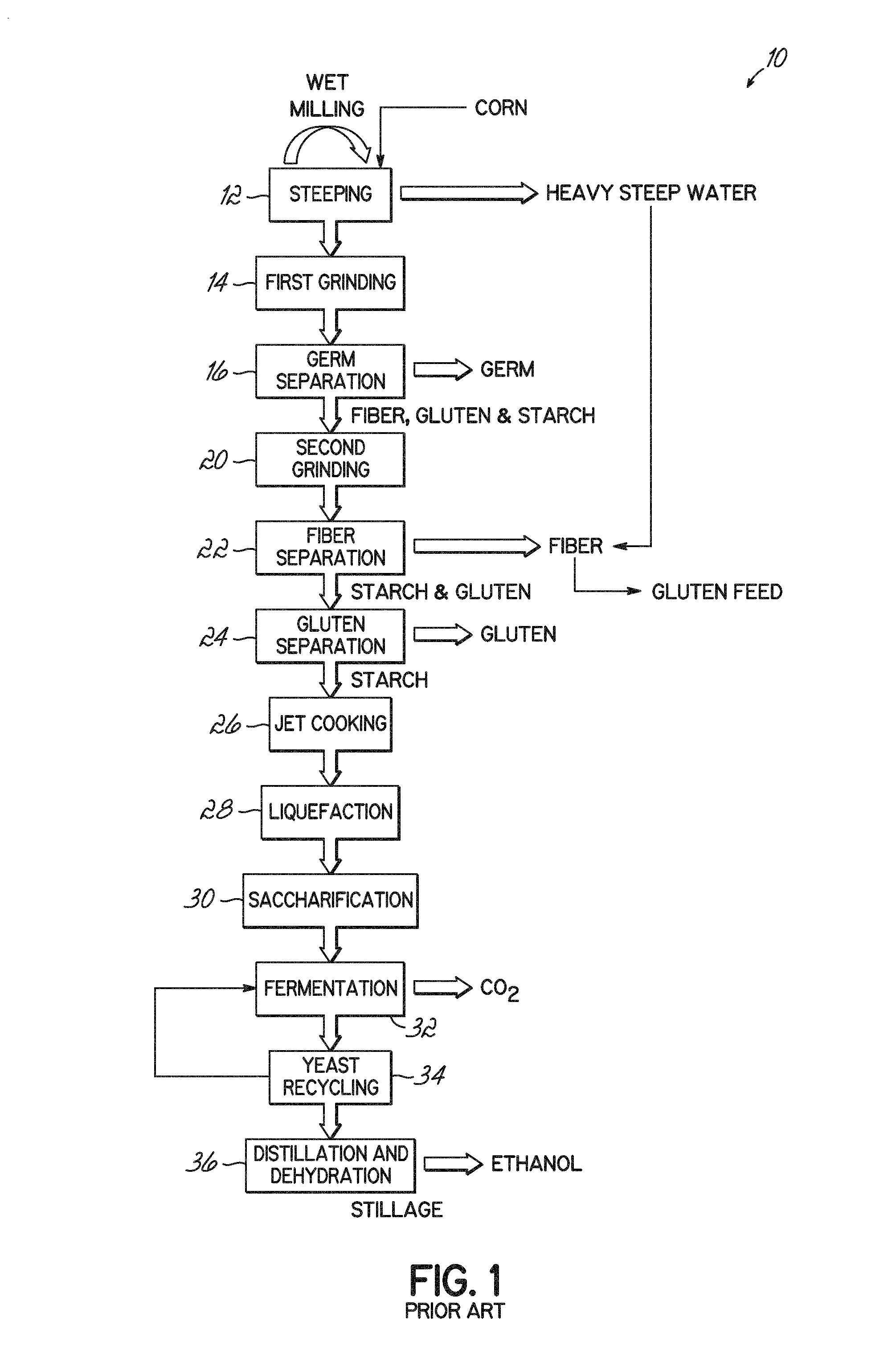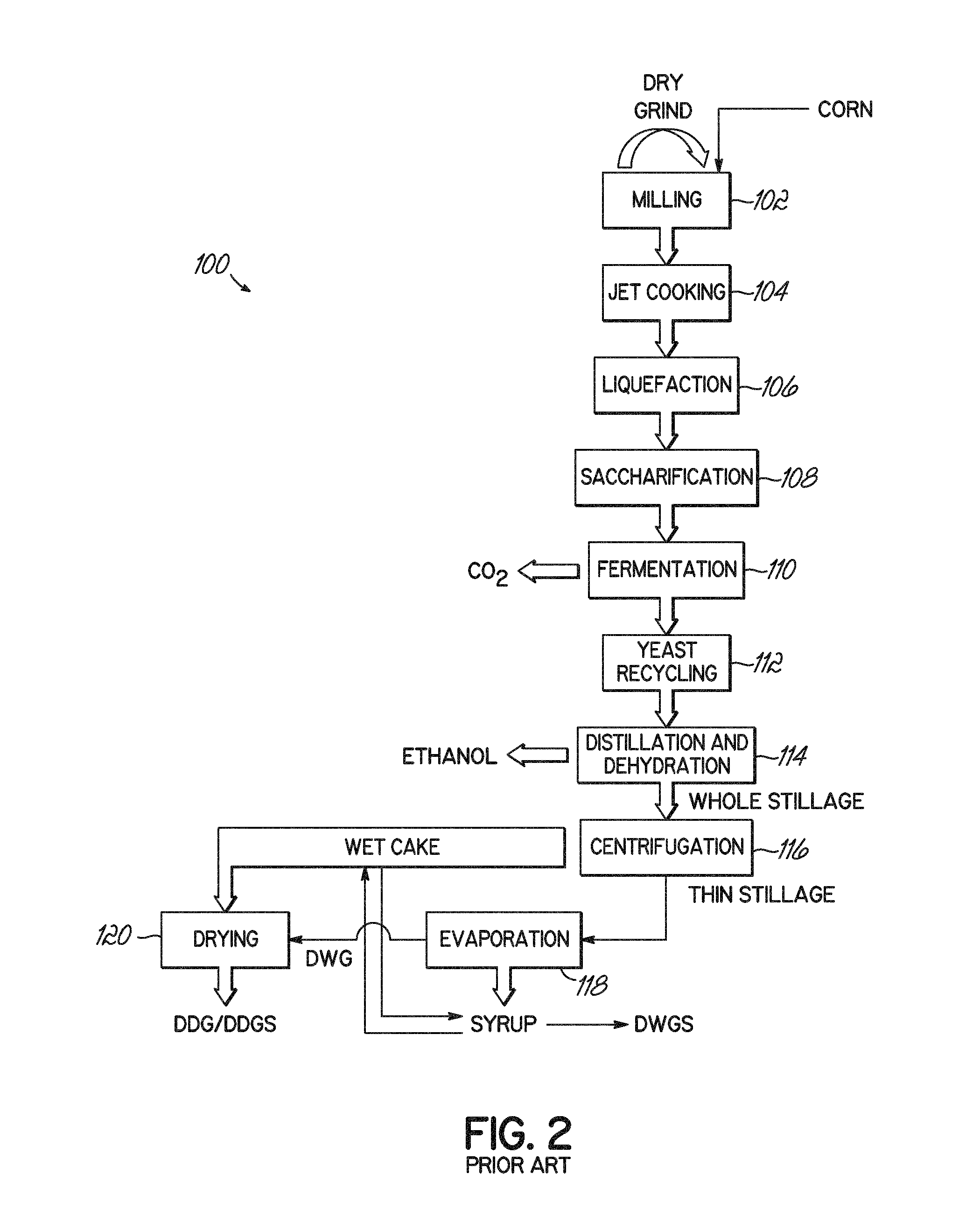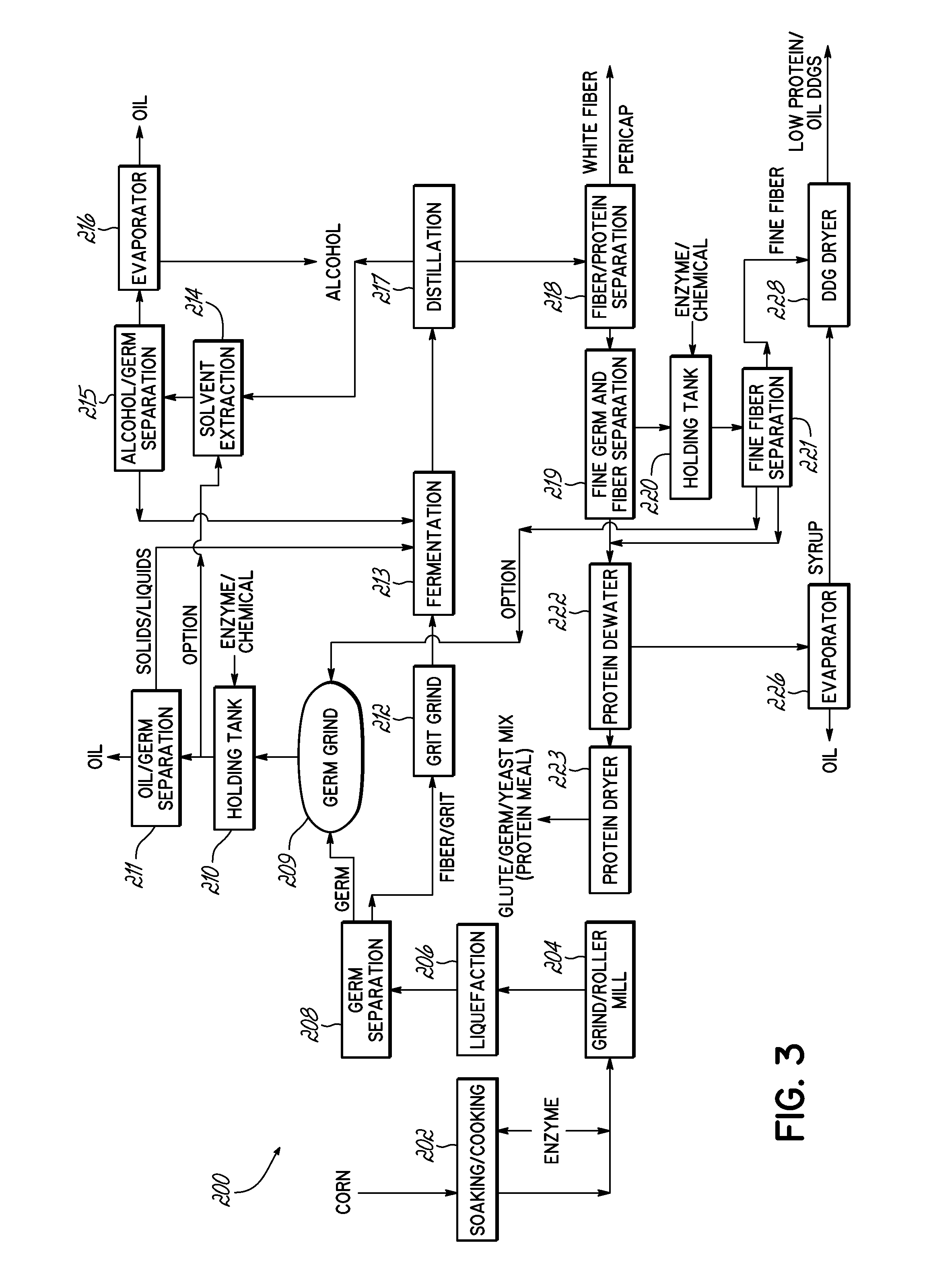A system and method for separating high value by-products from grains used for alcohol production
a technology of by-products and grains, applied in the field of system and method for separating by-products from grains used for alcohol production, can solve the problems of high capital investment and high energy cost of operation, low overall yield of various by-products, etc., and achieve the effect of high valu
- Summary
- Abstract
- Description
- Claims
- Application Information
AI Technical Summary
Benefits of technology
Problems solved by technology
Method used
Image
Examples
Embodiment Construction
[0037]FIGS. 1 and 2 have been discussed above and represent flow diagrams of a typical wet mill and dry grind ethanol production process, respectively.
[0038]FIGS. 3-5B illustrate various embodiments of a system and method for separating high value by-products, such as oil, white fiber, and protein meal, from grains used for alcohol production, which are improvements over the typical processes and others. These systems and methods are discussed in detail herein below.
[0039]As an overview of the embodiments shown in FIGS. 3-5B, each system and process includes, after milling of the corn and prior to fermentation, separation of germ from a liquefied starch solution utilizing density differences between the different components in that solution. The liquefied starch solution after liquefaction contains oil, germ, grit, protein, and fiber particles with particle sizes ranging from less than 50 micron up to more than 2 mm. The density of oil typically is about 0.9 grams / cc, germ particle ...
PUM
| Property | Measurement | Unit |
|---|---|---|
| Mass | aaaaa | aaaaa |
| Mass | aaaaa | aaaaa |
| Particle size | aaaaa | aaaaa |
Abstract
Description
Claims
Application Information
 Login to View More
Login to View More - R&D
- Intellectual Property
- Life Sciences
- Materials
- Tech Scout
- Unparalleled Data Quality
- Higher Quality Content
- 60% Fewer Hallucinations
Browse by: Latest US Patents, China's latest patents, Technical Efficacy Thesaurus, Application Domain, Technology Topic, Popular Technical Reports.
© 2025 PatSnap. All rights reserved.Legal|Privacy policy|Modern Slavery Act Transparency Statement|Sitemap|About US| Contact US: help@patsnap.com



